For the most accurate listings, including modes of instruction please visit BuckeyeLink or Classes.osu.edu.
Spring 2026 Course Offerings
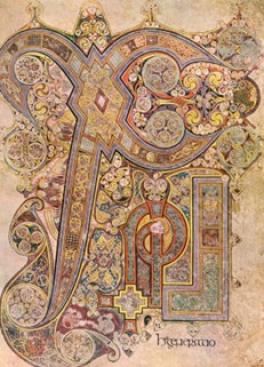
History of Art 2001 ONLINE - Western Art I: Ancient and Medieval Worlds
Course Designer - Professor Karl Whittington, Instructor - Professor Kristen Adams
Class # 25804 | ONLINE | Full Semester | ASYNCHRONOUS
Course Designer - Professor Karl Whittington, Instructor – TBD
Class #28930 | ONLINE | 7 Weeks, Session 2 | ASYCHRONOUS
This course examines the history of Western Art (architecture, painting and sculpture) from the third millennium BCE through the fifteenth century CE. Rather than a complete “survey” of that period, the course will concentrate its attention on a select group of representative monuments. We will examine not only the monuments themselves, but also the historical context in which they were produced in order to explore their purpose and the way that they functioned. There will be a strong emphasis on visual analysis and understanding how visual forms convey meaning and relate to the viewer. Our goal is to impart not only a body of knowledge but also a set of critical tools, which you should be able to apply to even material not specifically covered in this course.
GEN foundations: Literary, Visual and Performing Arts (LVPA) and Historical and Cultural Studies
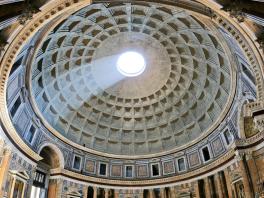
History of Art 2001 - Western Art I: Ancient and Medieval Worlds
Instructor – TBD
Class # 30286 | IN PERSON | TUE & THUR 5:30 - 6:50
This course examines the history of Western Art (architecture, painting and sculpture) from the third millennium BCE through the fifteenth century CE. Rather than a complete “survey” of that period, the course will concentrate its attention on a select group of representative monuments. We will examine not only the monuments themselves, but also the historical context in which they were produced in order to explore their purpose and the way that they functioned. There will be a strong emphasis on visual analysis and understanding how visual forms convey meaning and relate to the viewer. Our goal is to impart not only a body of knowledge but also a set of critical tools, which you should be able to apply to even material not specifically covered in this course.
GEN foundations: Literary, Visual and Performing Arts (LVPA) and Historical and Cultural Studies
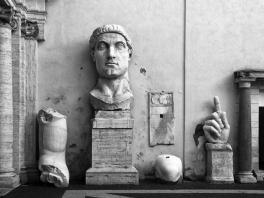
History of Art 2001 HONORS - Western Art I: Ancient and Medieval Worlds
Instructor Mark Fullerton
Class # 30145 | HYBRID | MON & WED 9:35 - 10:55
This course examines the history of Western Art (architecture, painting and sculpture) from the third millennium BCE through the fifteenth century CE. Rather than a complete “survey” of that period, the course will concentrate its attention on a select group of representative monuments. We will examine not only the monuments themselves, but also the historical context in which they were produced in order to explore their purpose and the way that they functioned. There will be a strong emphasis on visual analysis and understanding how visual forms convey meaning and relate to the viewer. Our goal is to impart not only a body of knowledge but also a set of critical tools, which you should be able to apply to even material not specifically covered in this course.
GEN foundations: Literary, Visual and Performing arts (LVPA) and Historical and Cultural Studies
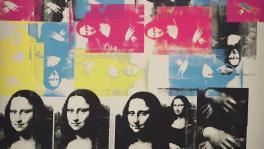
History of Art 2002 ONLINE - Western Art II: Europe and the United States, Renaissance to Modern
Course Designer – Jody Patterson, Instructor – TBD
Class # 19175 | ONLINE | ASYNCHRONOUS
This course examines the art of Europe and the United States from about 1400 to the present, with an emphasis on developments in painting. Rather than a traditional survey of that period, the course will concentrate on a select group of representative works that shaped—and were shaped by — Western social, political, economic, and intellectual history. There will be a strong emphasis, too, on questions of analysis and interpretation —including, in some cases, the changing history of the artworks’ reception. The goal will be to impart not only a body of knowledge but also a set of critical tools, including visual literacy, that students will be able to apply to a wide range of material not specifically covered in the course.
GEN foundations: Literary, Visual and Performing Arts (LVPA) and Historical and Cultural Studies
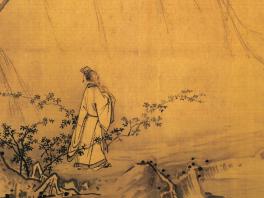
History of Art 2003 - The Art & Visual Culture of East Asia
Instructor Hannah Slater
Class # 19176 | IN PERSON | TUES & THURS 2:20 - 3:40
This course offers an introduction to the visual arts in East Asia, from the Neolithic Period up to today. By looking at a selection of artworks from across a wide field, students will gain an appreciation for, and understanding of, artistic practices and traditions from China, Korea, and Japan, as well as neighboring regions Tibet and Taiwan. This course examines major artistic and cultural developments within each region but also considers how these areas influence one another cross-culturally, emphasizing moments of encounter and exchange. Students will look at ceramics, bronzes, paintings, sculpture, textiles, architecture, prints, and photographs, in order to historically analyze how art from China, Japan, and Korea informs the way we see, engage with, and think about each of these places, and even the idea of East Asia in general. Students will gain well-rounded knowledge of Art and Visual Culture in East Asia by practicing close looking, close reading, critical thinking, and by making informed interpretations. This course is organized through a series of in-class lectures, discussions, online assignments, and in-class activities.
GEN foundations: Literary, Visual and Performing Arts (LVPA) and Historical and Cultural Studies
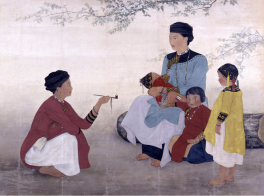
History of Art 2003 HONORS - The Art & Visual Culture of East Asia
Professor Christina Wei-Szu Burke Mathison
Class # 34773 | IN PERSON | WED & FRI 11:10 - 12:30
This course offers an introduction to the visual arts in East Asia, from the Neolithic through today. The course examines in particular the relationship between cultural production and changing notions of authority in East Asia in a comparative historical perspective. Case studies will be drawn from China, Korea, Japan, and neighboring regions. Issues examined include: religion and early state formation; courtly culture and monumentality; the development of urban popular culture; the age of empire; art and modernization.
GEN foundations: Literary, Visual and Performing Arts (LVPA) and Historical and Cultural Studies
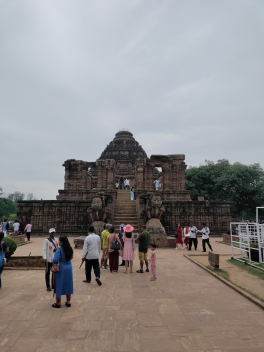
History of Art 2007 - Buddha to Bollywood: The Arts of India
Professor Ujaan Ghosh
Class # 30515 | IN PERSON | TUE & THUR 2:20 - 3:40
This course is designed to offer students a comprehensive overview of the diverse visual cultures of South Asia. We will delve into a broad range of topics, including architecture, sculpture and painting, performative traditions, and film. Through lectures, discussions, and assignments, we will develop a critical vocabulary to better understand and interrogate the rich visual heritage of the Indian subcontinent. Our focus will be on exploring the various ways in which visual culture has been utilized as a modality to express political power, gender roles, ethnic and racial identity, diverse religious beliefs, and social aspirations. Further, the course steers attention to questions of gender and identity in the South Asian context as they are expressed through artistic practice. Additionally, we will take a closer look at some of the foundational pedagogical debates and conversations surrounding South Asian Art. By the conclusion of the course, students will have a comprehensive understanding of the diverse artistic traditions as they are practiced in South Asia, and an appreciation for art’s intersection with complex issues of race, ethnicity, gender, and politics.
GEN Foundations: Literary, Visual, and Performing Arts (LVPA) and Race, Ethnicity, and Gender Diversity (REGD)
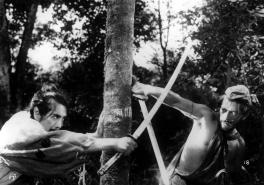
History of Art 2901 ONLINE - Introduction to World Cinema
Course Designer - Professor Kris Paulsen, Instructor – TBD
Class # 25805 | ONLINE | Full Semester | ASYNCHRONOUS
Course Designer - Professor Kris Paulsen, Instructor – TBD
Class # 30289 | ONLINE | 7 Weeks, Session 2 | ASYNCHRONOUS
This course will introduce students to the history of film as an artistic medium and a global art form. We will track technological, aesthetic, and formal developments in its evolution from photographic and proto-cinematic technologies to digital cinema by studying particular masterpieces, and focusing on the role of the director or auteur. We will pay close attention to the medium’s complex relationship to time, its changing materiality, and its fraught relationship to truth and reality. Students will engage in a historical and formal study of international cinema through a chronological survey of its major forms, techniques, and its relationship to the broader history of art, as well as social and political history. We will sample its major and “minor” forms, from Hollywood productions to art gallery experiments and cinema from the developing world. Students will be introduced to the grammar of film through a historical account of its formal evolution and the stylistic analysis of the visual and narrative structures of individual films.
GEN Foundations: Literary, Visual and Performing Arts (LVPA)
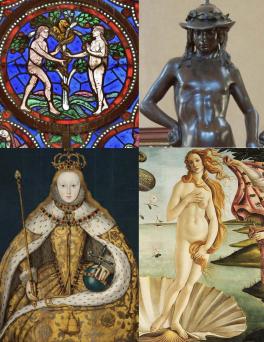
History of Art 3010 ONLINE - Gender and Sexuality in European Art
Course Designer - Professor Karl Whittington, Instructor – TBD
Class # 28617 | ONLINE | Full Semester | ASYNCHRONOUS
Course Designer - Professor Karl Whittington, Instructor – TBD
Class # 30546 | ONLINE | 7 Weeks, Session 2 | ASYNCHRONOUS
This course offers an introduction to the intersectional study of European Art, exploring the intertwining ideologies of gender, sexuality, race, and ethnicity from the Ancient Mediterranean World to the present. We will see that the ways artworks impact and construct ideas and stereotypes about gender, race, and sexuality in the modern world are deeply influenced by their development in premodern history. Topics to be explored include the ways in which ideas about gender roles and identities are shaped by artworks; the gendered contexts of artistic production; gendered practices of viewing works of art; the changing status of female and non-white artists and patrons in Europe; the way people of color were depicted in premodern European art; and queer and transgender artists and artworks. We will investigate the ways in which works of art enforced particular codes of behavior for people of different genders and races, but also how works of art served as sites of resistance to such roles and stereotypes, and as a place where individual identities were negotiated and portrayed. We will explore both famous works of European art and also lesser-known paintings, sculptures, buildings, and objects of visual culture.
GEN Foundations: Literary, Visual, and Performing Arts (LVPA) and Race, Ethnicity, and Gender Diversity (REGD)
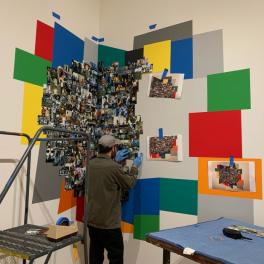
History of Art 3050 – Careers in History of Art
Professor Kristen Adams
Class # 35941 | IN PERSON | MON 10:30 - 11:25
In this course, students will be introduced to a wide range of professions that History of Art students go on to after graduation. First, you will have the opportunity to do some analysis of and reflection upon what your personal traits are, and what kind of work you find meaningful. Based on the criteria you develop, you will then be able to size-up the work experiences in a range of different fields that History of Art students enter. We will hear from guest speakers working in a wide range of fields, who will share their experiences on the job market and in their work. We will also explore strategies for identifying and obtaining internships, as well as the details of job seeking, including resume, curriculum vitae and LinkedIn profile preparation, as well as the writing of cover letters, statements of purpose and interviewing for jobs.
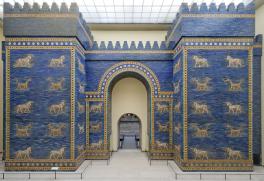
History of Art 3211 - Art and Civilization in Mesopotamia
Instructor Sarah Schellinger
Class # 29663 | IN PERSON | MON & WED 9:35 - 10:55
Produced in the cradle of civilization, Mesopotamian art has a rich history of constructing monuments and creating objects that would provide insight into the lives of the people living during the advent of civilization. The aim of this course is to provide an overview of the major sites, structures, and artifacts throughout the greater Mesopotamian region from the beginning of the Neolithic revolution through the Parthian and Seleucid periods.
GEN Foundations: Literary, Visual, and Performing Arts (LVPA)

History of Art 3521 - Renaissance Art in Italy
Professor Kristen Adams
Class # 27161 | IN PERSON | MON & WED 3:55 - 5:15
This course offers a panoramic introduction to the greatest artists and masterpieces of the Italian Renaissance from its beginnings in Florence through its triumph in Rome and Venice. After setting the stage with a brief overview of the art of the Late Gothic period in Italy, lectures will trace the revolutionary changes and global interests that transformed painting, sculpture, and the decorative arts in the 15th and 16th centuries. Special consideration will be given to the intersection of art and technology. Students will experience the Sistine Chapel and additional spaces in Virtual Reality and will examine how other modern technologies, when applied to Renaissance art, bring new insight to this remarkable period in history.
Image: Sandro Botticelli, Birth of Venus, ca. 1485, Tempera on Canvas, Uffizi Gallery
GEN Foundations: Literary, Visual, and Performing Arts (LVPA)
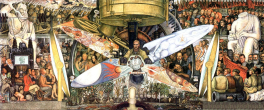
History of Art 3603 - Introduction to Modern Latin American Art & Culture
Professor Carlos Rivas
Class # 35209 | IN PERSON | TUE & THUR 3:55 -5:15
This in-person course introduces the art and architecture of “modern” Latin America. The course will begin with a very brief overview of ancient (also known as “Pre-Columbian”) and “early” modern art of Mesoamerica and the Andes. We will then shift to the nineteenth century and look at how art played a role in constructing various forms of nationalism in Latin America. With close attention to artists such Diego Rivera, Tarsila do Amaral and Frida Kahlo among others, we will pay special attention to the development of specific artistic movements and methods, major artists, political graphics, and social movements. We will end the semester with a brief examination of art of the Latin American diaspora in the United States (known today as contemporary “Latinx” art).
Image Caption: Diego Rivera, Man, Controller of the Universe, Palacio de Bellas Artes, Mexico City, 1934.
GEN Foundations: Literary, Visual and Performing Arts (LVPA)
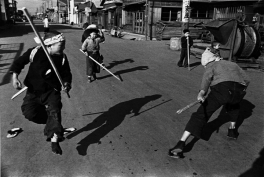
History of Art 3605 - East West Photography
Professor Namiko Kunimoto
Class # 34835 (+Recitation) | IN PERSON
LECTURE: MON & WED 2:20 - 3:40 | Recitation: FRI 11:30 - 12:25 or 12:40 - 1:35
This course will begin with the emergence of photography and will examine the medium’s pivotal role in shaping relations between Asia and the West. We will explore early portraiture, architectural sites, colonial tourism, popular culture, family photographs, and contemporary art photography. No previous experience in Asian art or photography required.
Image: Domon Ken, Koto, 1955
GEN Foundations: Literary, Visual, and Performing Arts (LVPA) and Race, Ethnicity, and Gender Diversity (REGD)
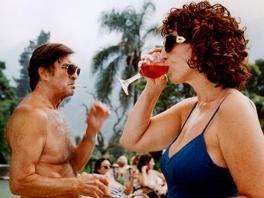
History of Art 3901 - World Cinema Today
Instructor Mark Svede
Class # 19178 | IN PERSON | TUE & THUR 5:30 - 6:50
This course examines feature films from around the globe that illustrate a range of forms and topics in recent cinema. Though this is a multi-national survey, we will consider films not only as representative examples of national cinema traditions but also as expressions of regional, ethnic, devotional, sexual, gendered and globalist identities. Rather than focusing on what particular films mean, we will study how filmmakers shape meaning, how viewers construct interpretations, why certain aesthetic choices can promote ideological perspectives and reveal underlying values.
GEN Foundations: Literary, Visual, and Performing Arts (LVPA)
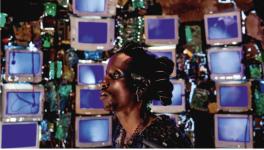
History of Art 3901 ONLINE - World Cinema Today
Professor Erica Levin
Class # 30288 | ONLINE | ASYNCHRONOUS
This course provides an introduction to World Cinema. It begins by examining how the aesthetics of realism, concerned above all with the texture and temporality of everyday life, have shaped developments in filmmaking in Europe, Latin American, and Asia. It also considers how recent global art cinema engages with the codes of genre and commercialism. How have familiar cinematic codes and conventions been reinvented to depict experiences shaped by transnationalism, colonialism, global finance, and migration? By placing films made across the globe into the broader historical and (multi-) cultural contexts of their production, this course examines how world cinema today not only engages life in the present but also calls up occluded fragments of the past.
GEN Foundations: Literary, Visual, and Performing Arts (LVPA)
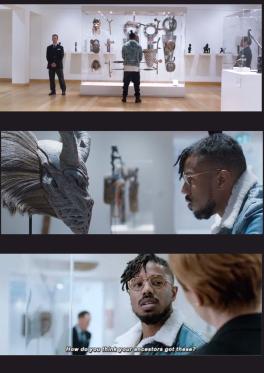
History of Art 4010 - An Introduction to the Methods and Theories of Art History
Professor Ujaan Ghosh
Class # 19179 | IN PERSON | TUE & THUR 11:10 - 12:30
The Course is intended for Art History Majors and other interested students to get acquainted with the fundamental theories and methods of art historical writing. Throughout the course, we will closely read some of the foundational texts that have influenced art historical writing over the past few centuries. We will look at how global movements— aesthetic, political, and sociological have shaped the ways in which historians have approached writings on art. At the same time, the course will attempt to decenter the overabundant theoretical gaze on European thought that dominates art historical methodology. At the end of this course, students should be able to engage with the multiple modalities of art historical thought and become more aware of the kind of art historian they want to become in the future.
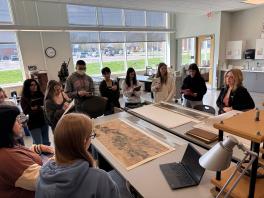
History of Art 4030 - Museum Studies Seminar: Art Conservation
Professor Christina Wei-Szu Burke Mathison
Class #34775 | IN PERSON | TUE & THUR 2:20 - 3:40
This course is designed as an introduction to art conservation through the lens of art history. Through an exploration of historical and theoretical readings on art conservation and hearing from specialists in the field, we will work through various topics and areas of conservation. Considering the ethics behind art conservation, course topics will include the conservation of: architecture, variable media art, East Asian scrolls, oil on canvas, textiles, works on paper, photography, and books and manuscripts. We will also consider concepts of preventative conservation in the context of the care of archaeological materials, archiving, and digitization. The course will involve class visits to conservation studios, engagement with specialists in the field, working on an art conservation project, shadowing conservators, and learning about art conservation programs and conservation fieldwork.
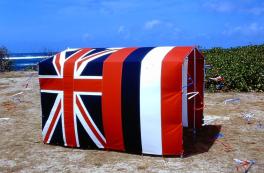
History of Art 4040 – Topics in Indigenous Art History: Art and Hawaiian Sovereignty
Professor Aaron Katzeman
Class # 35179 | IN PERSON | WED & FRI 3:55 - 5:15
While Kanaka Maoli (Native Hawaiian) artists have regularly been excluded from Hawaiʻi’s most influential art museums, counter-institutional forms of visual culture have played a significant role in the development of the Hawaiian sovereignty movement. This course examines such work—sculpture, photography, film, print publications, protest ephemera, digital cartography, and other media—produced alongside the various land struggles, demilitarization efforts, and political campaigns that comprise the sovereignty movement. Although primarily focusing on the movement’s resurgence following US statehood in 1959, we will also consider art and visual culture related to relevant historical events, including the overthrow of the Hawaiian Kingdom, resistance to annexation, labor struggles during the Territory period, and popular opposition to statehood. Students will critically engage concepts such as US imperialism, military occupation, (Asian) settler colonialism, environmental justice, and decolonization. Concentrating on work by Kanaka Maoli artists, curators, and scholars, this course will situate Hawaiʻi within a broader context of global Indigenous art and anticolonial politics.
Image: Bernice Akamine, Kuʻu One Hānau, 1999, Hawaiian flag, metal frame, and recycled cardboard
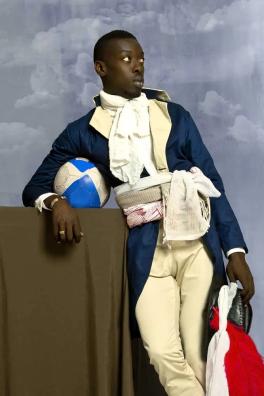
History of Art 4240 – Arts of the Black Atlantic
Professor Benjamin Jones
Class # 34781 | IN PERSON | WED & FRI 9:35 - 10:55
Where is the Black Atlantic? What does it look, smell, taste, and feel like? How does it color our world? This class explores the visual and cultural history of the Black Atlantic—a phrase used to define the relationship between dissonant geographical locations that were forged into relationship with each other through the Transatlantic Slave Trade. We will forge an understanding of how vision, texture, touch, sound, and color owe their meanings through the Middle Passage and its production of arts of the Black Atlantic. Crucial to this class is the artwork of practitioners like Aaron Douglas, Romare Bearden, Josephine Baker, Aubrey Williams, AfriCOBRA, Frank Bowling, Wangechi Mutu, and Renee Green. We will focus primarily on the visual history and cultural impact of the Middle Passage as discussed through the writings of Afro-Caribbean, West African, Black American, and Black British scholars. We will work with concepts like “modern” visual forms, the afterlives of slavery, “the aesthetics of cool”, and the anticolonial imagination.
Image: Omar Victor Diop, Jean Baptiste Belley, 2014
GEN Theme: Migration, Mobility and Immobility (MMI)
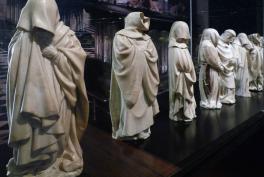
History of Art 4510 – Northern Renaissance Art
Professor Kristen Adams
Class # 34833 | IN PERSON | MON & WED 2:20 - 3:40
This course explores the visual culture of northern Europe between about 1380 and 1585, a period impacted by plagues, war, and religious upheaval. Discussions will center on the themes of the role visual images play in spiritual practice; how the Protestant Reformation irrevocably altered art and its production and function; the impact of aristocratic courts and the rise of the art market; artistic innovations and new technologies, and the rise of the status of the artist during this transformative period in European history. Some works will be examined in great detail to consider the kinds of effective visual strategies they employed to engage the viewer and fulfill particular functions; others will be considered primarily as exemplifying types of responses to and engagement with a rapidly changing world. In all cases, the purpose will be to explore the ways that images are constructed to convey meaning and affect the viewer and to consider how they participate in shaping religious, social, and cultural values and/or constructing individual and community identity.
Image: Claus Sluter, Mourners from the Tomb of Philip the Bold, c. 1404-10, Alabaster
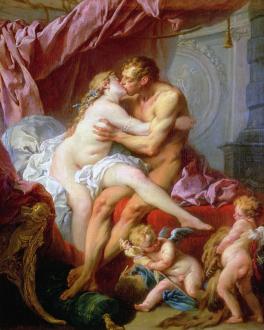
History of Art 4550 – 18th Century European Art
Professor Andrew Shelton
Class # 34774 | IN PERSON | MON & WED 5:30 - 6:50
This course explores the art of 18th-century Europe, with an emphasis on developments in painting in the artistic centers of Venice, Paris, London, and Rome. Artists whose careers will be studied in detail include Giovanni Battista Piazzetta and Giovanni Battista Tiepolo in Venice; Antoine Watteau, François Boucher, Jean-Baptiste-Siméon Chardin, and Jean-Honoré Fragonard in Paris; and William Hogarth, Thomas Gainsborough, and Sir Joshua Reynolds in London. The last weeks of the course will be devoted to charting the emergence of Neoclassicism in Rome and its subsequent spread throughout the continent in the years leading up to the French Revolution.
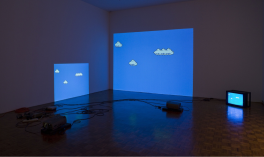
History of Art 4605 - Aspects of Modernity: Art Games
Instructor April Riddle
Class # 35949 | IN PERSON | MON & WED 3:55 - 5:15
Over the past few decades, our lives have become increasingly gamified. In that they respond to this condition and the rise of the most popular entertainment media of our time, artist-produced video games are the primary form of participatory art in the present. While we will begin this course with a general overview of the history of video games and the context of their emergence from military-academic sites, more broadly, we will consider how artists use games of all sorts as form and content of their works. Together, we will explore everything from art games to game art, participatory art, performance art, net art, video art, machinima, and blockchain-based artworks. Rather than progress strictly chronologically, we will weave through histories of art and games and strive to draw connections between our artworks of focus. By analyzing video games and other game-related artworks in relation to topics and concepts from game studies, film and media studies, ludic theory, and game theory, we will expand our understanding of how artists have both interrogated and embraced the spread of gaming logics, such as liquidity, flexibility, quantification, flow, and presumed rationality, both through and beyond the screen.
Image: Cory Arcangel, Super Mario Clouds, 2002, hacked Super Mario Brothers cartridge
GEN Foundations: Literary, Visual, and Performing Arts (LVPA)
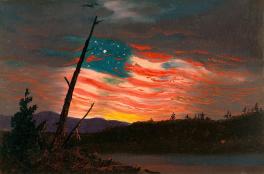
History of Art 4630 - Inventing the Americans: The Art of Citizenship, Nationhood, and Democracy, 1776-1900
Professor Jody Patterson
Class # 29667 | IN PERSON | TUE & THUR 3:55-5:15
This course is concerned with how citizenship, nationhood, and democracy were constituted in and through works of art from the founding of the United States in the late 18th century, through the nation’s rise to global dominance by the turn of the 20th century. We will look at a range of artworks— including painting, sculpture, print, and photography—with a view to understanding how the nation, its citizens, and its approaches to democracy were made visible (or rendered invisible) in culture.
The course will explore what artworks say about national identity and historical memory. Do images convey a common set of ideals and values that create an overarching sense of unity in American society? Conversely, how and why do different social groups contest certain artworks or visual representations? Unifying themes in this course include the implications of geographical and political redefinition of the United States through Westward expansion; processes of economic and social modernization; shifting definitions of what it meant to be an “American;” who counted as a “citizen;” and how democracy has been pictured for different audiences.
GEN Theme: Citizenship for a Diverse and Just World (CDJW)
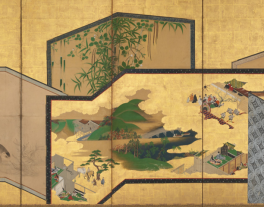
History of Art 4820 - The Arts of Japan
Instructor Hannah Slater
Class # 29666 | IN PERSON | TUE & THUR 5:30 - 6:50
This course explores the rich and varied artistic practices of art in Japan starting with the Neolithic Period and ending with the start of the Meiji Period in 1868. Through close examination of ceramics, architecture, painting, textiles, and prints, students will interpret and critically engage with key works across a wide span of history, materials, and processes of making. Some of the topics students will look at in this course include the representation of foundational narratives, the visual culture of Shinto and Buddhism, the role of gender and patronage in court culture during the Heian Period (794-1185), the aesthetics surrounding the Shogun and the warrior class, and the global exchange of knowledge and the rise of popular art forms during the Edo Period (1603-1868). Reading assignments draw on a variety of sources such as primary texts, textbook excerpts, and scholarly articles. No prior experience in Art History, Japanese Art, or Japanese Language is necessary to be successful in this course.
GEN Foundations: Literary, Visual, and Performing Arts (LVPA)

History of Art 5002 – Special Topics in Nonwestern Art: Nubian Art and Architecture
Instructor Sarah Schellinger
Class # 34839-UG or 34840-G | IN PERSON | MON & WED 12:45-2:05
Ancient Nubia, often overshadowed by its northern neighbor, was a powerful and remarkable country in its own right. Over the course of the semester, we will examine the complex histories of Nubian cultures from the Neolithic into the Iron Age (ca. 5000 BCE – 500 CE) as well as the nature of their interactions with ancient Egypt, the Mediterranean, and the Aksumite Empire. Topics such as state formation, funerary and religious practices, and international relations will be addressed through material cultural remains, excavation reports of archaeological sites, and historical (primary and secondary) accounts. We will also consider the history of colonization and political unrest of modern-day Sudan and their impact on the study of Nubian culture, past and present.
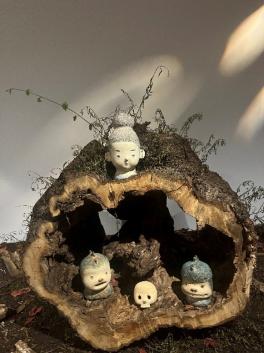
History of Art 5822 – Japanese Painting and Prints: Buddhist Art in the Modern World
Professor Namiko Kunimoto
Class # 34845-UG or 34844-G | IN PERSON | TUE & THUR 12:45-2:05
This course focuses on Japanese paintings and prints with an emphasis on Buddhism in the modern world. We encounter references to Buddhism and images of the Buddha in our everyday life; in fact, they have become so ubiquitous that we may have ceased to engage with them critically. What to make of cereal that promises to make you enlightened with every crunch, or “Zen” face cream? Does a virtual icon have the same religious power that a sculpture of Amida Buddha has in a temple in Japan? This course will ask students to consider how Buddhist cultural, commercial, and spiritual significance is constructed visually, and how these constructions have been transformed in recent history. The course will involve critical engagement with readings and images, as well as discussion and debate.
Image: Ohtani Workshop, Buddha, 2024
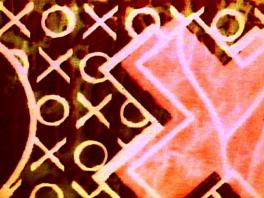
History of Art 5905 – Avant-Garde Cinema
Professor Erica Levin
Class #34777-UG or 34778-G | IN PERSON | TUE & THUR 2:20 - 3:40
Many historically significant films identified as “visionary,” “personal,” “experimental,” “political,” and “modernist” have been produced in surprisingly close proximity to the film industry. This course traces the complex and shifting relationship between what film historian David E. James designates as “major” (commercial, Hollywood) cinema and the “minor” cinemas of the avant-garde produced by artists, amateurs, agitators, and the like. Completed with limited financial resources, this work has often been distributed through alternative, self-organized channels of exhibition. Looking closely at narratives of stylistic evolution in avant-garde cinema, we will focus on points of contact between the history of art and cinema in both its major and minor modes. At the same time, we will remain attentive to questions that this approach risks leaving unanswered. How, for example, has the history of inventive, non-commercial cinema been shaped in unexpected ways by geography, (sub)culture, and politics? What kinds of communities and institutions have formed to support precarious modes of filmmaking in different moments and places? Where do the histories of individual filmmakers intersect with the often-conflicted social worlds their films address? With these questions in mind, we will look closely at a wide range of films made to surprise, unnerve, and provoke viewers since the early 1920s.
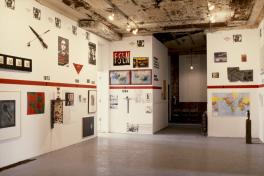
History of Art 7015 – Exhibition Histories
Professor Aaron Katzeman
Class # 34780 | IN PERSON | THUR 2:15 - 5:00
This seminar will examine the evolution of exhibition-making practices through frameworks of (anti-)colonialism, (anti-)imperialism, and (alter-)globalization. How did nineteenth-century world fairs and colonial expositions shape twentieth-century ethnographic presentations of “primitivist” and then “universal” exhibitions? How did the era of decolonization reshape exhibitions toward institutional critique and international solidarity? How has neoliberal globalization influenced curatorial and artistic practices in ways that both trouble and evade problematic assumptions regarding the imperialist world-system? And how have recent controversies in the contemporary art world reinvigorated debates around the ongoing legacies of such histories? Though these and other similar inquires, this seminar will interrogate how the exhibition format has continually shifted over time, used to either reify (even if unwittingly) or challenge cultural hegemony. Focusing on exhibitions as a locus of specialized study, students will consider how exhibitions, exhibition curators, and artists included in exhibitions always operate within a larger social, political, and economic context.
Image: Group Material, Timeline: The Chronicle of US Intervention in Central and Latin America, P.S.1, 1984
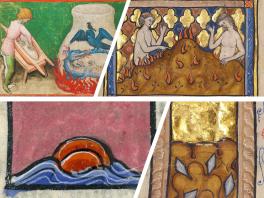
History of Art 8401 – Studies in Medieval Art: Queer Materials
Professor Karl Whittington
Class # 34779 | IN PERSON | WED 2:15 - 5:00
Materiality studies has emerged in the last 20 years as one of the most prominent methodologies in the study of pre-modern art across the globe. Much of the scholarship has focused on how people in different times and places understood the intrinsic properties of a range of natural and human-made materials. Different woods, pigments, stones, minerals, animals, and plants were understood to have particular spiritual, magical, astrological, alchemical, and material properties, and art historians have explored why certain materials were chosen for the production of particular historical objects and images. One of the key issues at stake was how these materials were believed to have been created, and how they in turn impacted the human bodies that interacted with them. Both of these questions necessarily raise issues of gender, creation, fertility, sexuality, and material transformation. In this seminar, we will explore the ways in which particular materials can be read through the lens of sexuality and queer studies. Each week we will explore a different material - parchment, gold, gemstones, mineral pigments, blood, ivory, water, wax, pearls, wood, and others - in order to probe the stakes of gender and sexuality in how these materials were understood to have been formed, how they could be transformed by artists, and how they impacted their viewers. The majority of the class will focus on Medieval and Early Modern European art, but readings and case studies will touch on premodern visual and material culture across the globe.
Image: Medieval drawings of alchemy, firestones, pearls, and diamonds
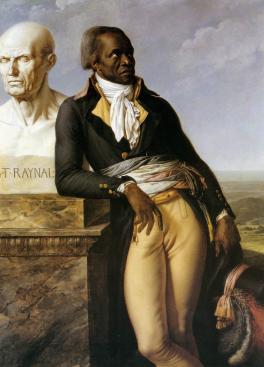
History of Art 8601 – Studies in Modern Art: Theorizing Black Art
Professor Benjamin Jones
Class # 29755 | IN PERSON | TUE 2:15 - 5:00
The discipline of Art History has been a central proponent of the greatness of Western thought. Art History actively co-defines modernity and modernism in ways that parse out what Stuart Hall calls “the West and ‘the rest.” Black Studies represents a substantial critique of Western modernity and a sizeable archive of social, political, and cultural alternatives. This course surveys “canonical” works in contrast against recent monographs in Art History and Black Studies to think about what is possible and to consider the work that still needs to be done in this undisciplinary field of inquiry.
Image: Anne-Louis Girodet, Portrait of Jean-Baptiste Belley, 1797
